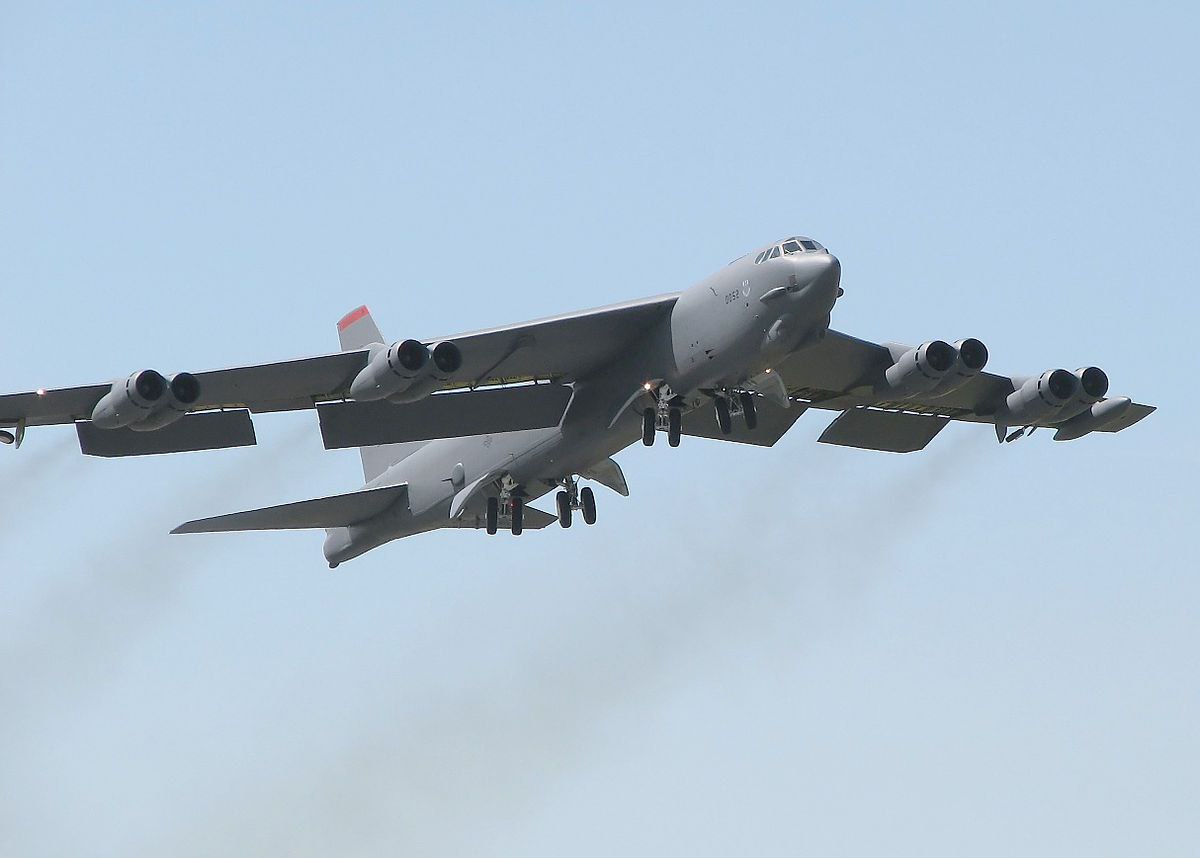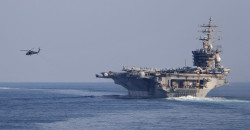U.S. bomber flies over the Middle East

Shafaq News/ A U.S. Air Force B-52 bomber flew from Europe across the Middle East on July 25, making a 32-hour flight as U.S. troops came under attack in Iraq and Syria on July 25 and July 26, U.S. officials told Air & Space Forces Magazine.
The bomber took off from Romania, where it was deployed on a brief Bomber Task Force mission, traveled east over the Mediterranean Sea, then crossed into the U.S. Central Command (CENTCOM) area of operations. Flying over Jordan, Saudi Arabia, and Qatar, it reached the Persian Gulf, then turned back, headed for the Atlantic Ocean, according to open-source flight tracking data reviewed by Air & Space Forces Magazine.
The aircraft, tail 60-0054, then returned home to Barksdale Air Force Base, La., on July 26.
The B-52 mission showcased ”extensive options … for fielding combat-ready forces to protect and defend the region from adversary aggression,” Air Forces Central (AFCENT) said in a July 27 press release. The mission was focused on practicing maritime firepower support, AFCENT said.
The mission also included flying with USAF A-10s from Selfridge Air National Guard Base, Mich., and KC-135 Stratoankers from both Fairchild Air Force Base, Wash., and McConnell Air Force Base, Kan., AFCENT said. The B-52 did not land while in CENTCOM, but did rendezvous and fly with Qatari F-15QAs, a U.S. official said.
“These missions amplify the U.S.’s ability to integrate with coalition forces and regional partners while demonstrating the strategic bomber fleet’s ability to operate anywhere with decisive impacts,” the official said.
It seems, however, that not everything went according do plan. A frequent poster on the X social media platform published apparent radio transmissions from the B-52 as it flew home solo to the United States, in which the crew stated “the second aircraft had a mechanical problem and did not take off.”
The U.S. Embassy in Doha originally said two B-52s would fly over Qatar.
“During the Bomber Task Force mission in the Middle East, the strategic bomber integrated with U.S. Marine Corps Central Command and other regional partners during the Maritime Fire Support Symposium,” AFCENT’s release said. “The addition of a long-range strategic bomber to the exercise provided the opportunity for Coalition Marine and Naval experts to employ a practical application of airpower to defend forward fighting positions.”
All B-52s deployed to Romania for the Bomber Task Force have now returned home, U.S. Air Forces in Europe said July 28.
The U.S. has sought to deter Iran and the groups it supports, including the Houthis, groups in Iraq and Syria, and Lebanese Hezbollah from broadening the conflict in the Middle East.
The B-52 mission flew over Saudi Arabia, which borders Yemen, and has intervened in the civil war between the Houthis and the internationally recognized government of Yemen. The U.S. continues to pursue an elusive deal to fully normalize diplomatic relations between Israel and Saudi Arabia, a deal that Iran fears. The Oct. 7 attacks by Hamas on Israel halted that progress.
“CENTCOM must rely on our partners in the region to solve the region’s complex challenges,” CENTCOM commander Army Gen. Michael “Erik” Kurilla said in a July 24 statement after a trip to the region.
The U.S. has continued almost daily strikes in Yemen against Houthi missile and drone targets. The group, which controls much of Yemen, has massively disrupted commercial shipping in the Gulf of Aden, the Red Sea, and Bab el-Mandab strait between them with its attacks. Together, the waterways are a vital commercial shipping lane, as vessels use the Suez Canal to transit between the Red Sea and the Mediterranean Sea, avoiding lengthy trips around Africa.
The Houthis, however, have not stopped. The group ramped up their actions by attacking Tel Aviv, Israel, on July 19—covering more than 1,000 miles with a drone that killed one person and prompted retaliatory Israeli airstrikes on the Houthi-controlled port of Hodeida in Yemen. The Wall Street Journal reported that Kurilla, in a highly unusual step, sent a letter to Pentagon leadership urging a more robust, whole-of-government response to the Houthis.
Russia, meanwhile, is apparently considering supplying the Houthis with anti-ship missiles for its continued harassing attacks on shipping in the Red Sea.
Israeli Prime Minister Benjamin Netanyahu was in Washington the past week for talks with American officials, including President Joe Biden and Vice President Kamala Harris, as the U.S. presses for a ceasefire between Israel and Gaza. Over 30,000 people have been killed in the conflict so far.
Iran-backed groups continue to keep up the pressure across the region. In the most direct threat to U.S. forces since October, Iranian-aligned groups have targeted U.S. troops in Iraq, Syria, and Jordan. In all, they have mounted over 170 attacks, and three U.S. soldiers were killed earlier this year.
On July 25, the day the bomber flight was taking place, two rockets were fired at Ain al-Asad Air Base in Iraq, two U.S. defense officials told Air & Space Forces Magazine. That followed two days of talks over the future of U.S. troops in the country.
Some 2,500 U.S. troops are in Iraq and around 900 are in Syria.
Meeting in Washington July 22-23, Iraqi and U.S. officials discussed how to end the official military campaign against the Islamic State and transition to “a bilateral security relationship,” said Secretary of Defense Lloyd J. Austin III in a briefing to reporters.
On July 26, two rockets were fired at Mission Support Site Euphrates in Syria, a U.S. official told Air & Space Forces Magazine. No injuries or damage was reported, the officials said, and it is not clear which groups carried out the attacks.
“We have work left to do,” Austin said during his press conference. “And we’re going to stay focused on that work.”





